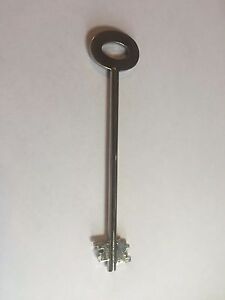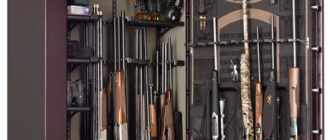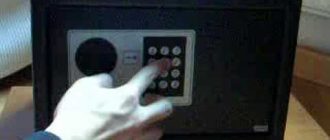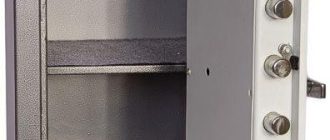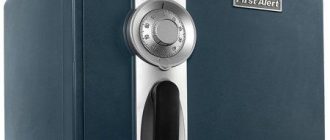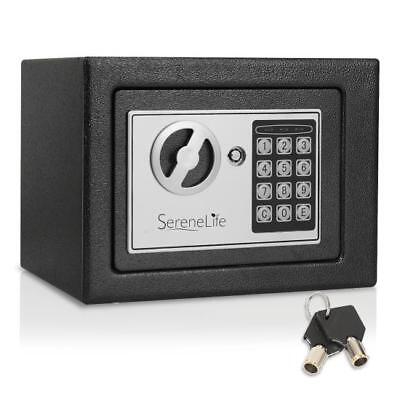
What are the different types of override keys that can be used in a safe?
In a safe, there are several keys that serve different purposes. One of these keys is the override key. The override key is a special key that allows access to the safe even if the regular key or combination is not known or has been forgotten. It is an emergency measure to ensure that the contents of the safe can still be accessed in critical situations.
The override key is typically kept in a secure location, such as with a trusted individual or in a safe deposit box. It is not meant to be easily accessible, as it is a last resort for opening the safe when all other options have been exhausted.
Using the override key requires a deliberate and intentional act, as it bypasses the normal security measures of the safe. It should only be used in genuine emergencies, such as when someone’s life or safety is at risk. In such cases, the override key provides a way to quickly access the contents of the safe without going through the usual and time-consuming processes.
Explanation of override keys
Override keys are special keys that provide a way to bypass the normal security measures in a safe.
These keys are typically used in emergency situations or when the original access methods are unavailable or not functioning properly.
Override keys are designed to override the normal locking mechanisms and allow immediate access to the safe.
They are usually unique to each safe and are kept in a secure location known only to authorized personnel.
Using override keys should be done with caution and only when absolutely necessary, as they can pose a security risk if not handled properly.
In conclusion, override keys in a safe are special keys that provide a way to bypass normal security measures and allow immediate access in emergency situations. They should be used with caution and only by authorized personnel.
Purpose of override keys
In a safe, override keys are special keys that allow authorized individuals to access the safe and bypass the usual locking mechanisms. These keys are designed to be used in emergency situations or when the regular locking mechanisms fail or cannot be used.
The purpose of override keys is to provide a backup method for accessing the contents of the safe when the primary access methods, such as a combination or electronic keypad, are unavailable or not working properly. They are typically used by security personnel, managers, or other individuals who have been granted the authority to override the normal security measures.
Override keys are usually unique and cannot be easily replicated, helping to ensure the security of the safe. They are often kept in secure locations or entrusted to specific individuals to prevent unauthorized access.
By using override keys, individuals can quickly gain access to the safe in situations where time is of the essence or when it is necessary to bypass the usual access methods. Once the emergency has been resolved or the regular access methods have been restored, the safe should be re-secured using the usual locking mechanisms.
Types of override keys
Override keys in the safe are special keys that allow authorized individuals to access the safe in certain situations when the regular opening mechanism is not available or not functioning properly. There are different types of override keys that serve specific purposes.
1. Master override key: This key is usually held by the owner or a designated individual who has the highest level of access to the safe. It can override any lock or code and grants full access to the safe.
2. Manager override key: This key is typically held by managers or supervisors who have the authority to override certain locks or codes. It allows them to access the safe in emergency situations or when authorized by the owner.
3. Service override key: This key is provided to technicians or maintenance personnel who may need to access the safe for repairs or servicing. It enables them to bypass the regular opening mechanism and ensure the safe can be opened without causing damage.
4. Emergency override key: This key is specifically designed for emergency situations, such as fire or other life-threatening events. It is usually more accessible and can be used by authorized individuals, such as security personnel or emergency responders, to quickly access the safe and retrieve important documents or valuables.
It is important to note that override keys should be stored securely and only provided to authorized individuals to prevent unauthorized access to the safe.
How override keys are used
The override keys in a safe are special keys that can be used to bypass the regular locking mechanism and gain access to the contents of the safe. They are designed to be used in emergency situations or when the regular access methods have failed.
Override keys are typically kept in a secure location and only accessible to authorized personnel. They are not meant to be used on a regular basis, as they can compromise the security of the safe. However, they provide a backup method of access when necessary.
When the override keys are used, they bypass the combination lock or electronic keypad to directly open the safe. This allows authorized personnel to quickly and easily access the contents inside, without needing to know or enter the regular access code.
It is important to handle override keys with care and keep them in a secure location. Unauthorized access to the override keys can compromise the security of the safe and potentially allow unauthorized individuals to gain access to the valuables inside.
In conclusion, override keys are an important feature of safes that provide a backup method of access in emergency situations. They should be used sparingly and only by authorized personnel to ensure the security of the safe and its contents.
Steps to use override keys
When you are locked out of your safe and cannot remember the code or the battery of the safe has died, the override keys can be used to access it. Here are the steps to use the override keys:
- Locate the override keyhole on the safe. This is usually located on the front panel or the back of the safe.
- Insert the provided override key into the keyhole and turn it clockwise.
- Gently pull or push the safe door to open it. The override key will disengage the locking mechanism and allow you to access the contents of the safe.
- Once you have successfully opened the safe using the override key, it is recommended to reset the code or replace the battery to prevent any future lockouts.
Remember to keep your override keys in a secure place, separate from the safe, to prevent unauthorized access.
Situations where override keys are necessary
Override keys in a safe are an essential feature that allows authorized individuals to gain access to the safe in specific situations where the standard means of entry may not be possible or desired. Here are some common situations where override keys are necessary:
- Emergency situations: In cases of emergency, such as fires or natural disasters, override keys provide a quick and efficient way to access the safe without wasting time on entering a combination or passcode.
- Forgotten combinations or passcodes: In the event that the combination or passcode to the safe is forgotten or misplaced, override keys can be used to bypass the standard locking mechanism and gain access to the contents stored inside.
- Maintenance or repair: When performing maintenance or repairs on the safe, it may be necessary to temporarily disable the standard locking mechanism. Override keys allow technicians or authorized personnel to open the safe without causing any damage.
- Locked out scenarios: If someone accidentally locks themselves out of the safe, override keys can be used as a backup method to open the safe and retrieve valuable items or documents.
- Lost or damaged electronic components: If the electronic components of the safe malfunction or become damaged, override keys provide an alternative way to open the safe and access the stored items.
Override keys in a safe are designed to provide a reliable and secure solution in situations where the standard means of entry are not feasible. It is crucial to keep the override keys in a safe and secure location, accessible only to authorized individuals, to ensure the integrity and security of the contents stored inside the safe.
Benefits of using override keys
Override keys are special keys that can be used to bypass the regular locking mechanism of a safe. They provide several benefits when it comes to accessing the contents of a safe in emergency situations or when the regular combination or key is lost. Some of the benefits of using override keys include:
1. Emergency access: Override keys allow for quick and easy access to the contents of a safe in emergency situations. For example, if someone is trapped inside a room and needs to access important documents or valuable items, the override keys can be used to unlock the safe without having to search for the regular combination or key.
2. Backup option: Override keys serve as a backup option in case the regular combination or key is lost or forgotten. This provides peace of mind to users, knowing that they have an alternative method of accessing the safe in case of any mishaps.
3. Convenience: Using override keys can be more convenient than using the regular combination or key. They eliminate the need to remember a specific combination or carry a key, making it easier to quickly access the contents of the safe when needed.
4. Security: While override keys provide easy access to the safe, they are typically designed to be used only in special circumstances. This ensures that unauthorized individuals cannot easily bypass the regular locking mechanism and gain access to the safe.
5. Versatility: Override keys are often designed to work with multiple safes. This means that if you have multiple safes with different combinations or keys, a single override key may be able to unlock all of them. This adds convenience and versatility when managing and accessing multiple safes.
Overall, override keys offer a range of benefits in terms of emergency access, convenience, security, and versatility. They provide a reliable backup option and ensure quick and easy access to the contents of a safe, especially in urgent situations or when the regular combination or key is lost.
Enhanced security measures
In order to provide increased security, many safes are equipped with override keys. These keys are designed to override the normal locking mechanism of the safe and provide access in emergency situations. However, it is important to note that the use of override keys should be limited and reserved for authorized personnel only.
The override keys are typically held by the owner or manager of the safe and are stored in a secure location. They are often made of a durable material and have unique patterns or shapes to ensure that they cannot be easily duplicated or tampered with.
When using the override keys, it is crucial to follow the proper procedures and protocols. Unauthorized use of the keys can compromise the safety of the contents inside the safe and can also lead to legal ramifications.
Additionally, it is recommended to periodically change the override keys to maintain a high level of security. This can help prevent unauthorized individuals from gaining access to the keys and potentially compromising the safe.
Overall, override keys are an important security feature in many safes. They provide a way to access the safe in emergency situations, but it is crucial to handle them with care and ensure that they are used only by authorized individuals.
Prevention of unauthorized access
One of the main concerns when it comes to safes is preventing unauthorized access. To enhance security, safes are equipped with override keys. These keys are designed to be used in emergencies or when the main access method fails.
In the event that you forget or lose the combination or code to open the safe, the override keys can be used as a backup solution. When using the override key, it bypasses the usual access method and allows you to unlock the safe manually.
It is important to keep the override keys in a secure location, separate from the safe itself. This prevents unauthorized individuals from gaining access to both the safe and the keys. Additionally, it is recommended that the keys are kept in a hidden or locked location for added security.
While the override keys are a convenient backup solution, it is crucial to use them responsibly. Only authorized individuals should have access to the override keys to prevent unauthorized entry into the safe. Regularly changing the access code or combination is also a good practice to further enhance the security of the safe.
In summary, override keys are an essential feature in safes to prevent unauthorized access. They serve as a backup solution in case the main access method fails or is forgotten. It is important to keep the keys secure and only accessible to authorized individuals for maximum security.
Common issues with override keys
When it comes to override keys for safes, there are a few common issues that users may encounter. Understanding these issues can help individuals troubleshoot and resolve any problems with their override keys.
| Lost keys | If you have misplaced or lost your override keys, you may be unable to access the safe in case of an emergency. Losing the keys can be a serious issue, as it can prevent you from retrieving valuable items or important documents stored inside the safe. | The best solution for lost keys is to contact the safe manufacturer or a professional locksmith. They may be able to provide a replacement key or offer alternative solutions to access the safe. |
| Damaged keys | If the override keys are damaged or broken, they may not function properly when inserted into the safe. This can prevent the key from turning or unlocking the safe, making it impossible to access its contents. | Replacing the damaged keys is typically the most effective solution. You may need to contact the safe manufacturer or a locksmith to obtain a new set of override keys. |
| Misconfigured keys | Some safes allow users to configure their own override keys, setting a unique combination for added security. However, if the keys are misconfigured or if you forget the combination, you may have trouble unlocking the safe. | In this case, contacting the safe manufacturer is advisable. They can guide you through the process of resetting or reconfiguring the override keys. |
| Incompatible keys | In certain situations, the override keys you have may not be compatible with the safe you are trying to open. This can occur if the keys are from a different safe model or brand. | If you suspect that the keys you have are incompatible with your safe, contacting the safe manufacturer or a locksmith is recommended. They can determine the correct keys needed to open the safe and provide you with the necessary replacements. |
By being aware of these common issues with override keys, you can minimize any potential problems and ensure that you can access your safe when needed.
Lost override keys
When it comes to a safe, one of the main concerns is the security of its contents. However, what happens if you lose the override keys? It’s a frustrating and potentially stressful situation, but there are some steps you can take to address the problem.
First and foremost, it’s important to understand what override keys are and what they are used for. Override keys are special keys that are designed to bypass the lock mechanism of a safe. They provide a failsafe in case the primary lock fails or in situations when authorized access is needed in emergency situations.
In the unfortunate event that you have lost the override keys for your safe, there are a few options you can consider:
| 1. Contact the manufacturer or supplier: | Reach out to the manufacturer or supplier of the safe and explain your situation. They may be able to provide you with replacement override keys or suggest alternative solutions. |
| 2. Seek help from a professional locksmith: | A professional locksmith who specializes in safes may be able to help you gain access to your safe. They have the expertise and tools to handle such situations and can often assist in retrieving or replacing lost override keys. |
| 3. Consider drilling the safe: | If all else fails, drilling the safe may be the last resort. This option should only be considered if you have exhausted all other avenues and have no other choice. However, keep in mind that drilling the safe can damage the contents inside, so proceed with caution and seek professional assistance if possible. |
It’s important to note that these options may depend on the specific make and model of your safe, so it’s always a good idea to consult the manufacturer or a professional locksmith for guidance tailored to your situation.
In conclusion, losing the override keys to a safe can be a challenging situation. However, by contacting the manufacturer, seeking help from a locksmith, or considering drilling as a last resort, there are ways to address the issue and regain access to the contents of the safe.
Malfunctioning override keys
The override keys are an important feature in a safe, allowing the user to bypass the normal locking mechanism and gain access to the contents inside. However, when these keys malfunction, it can cause serious problems and potentially compromise the security of the safe.
Override keys are typically designed to be a failsafe method for accessing the safe in case of emergency or when the regular unlocking mechanism fails. They are often used by authorized personnel such as security personnel or locksmiths. The override keys are usually unique to each safe and cannot be easily replicated.
When the override keys malfunction, it can be a frustrating situation for the owner of the safe. The malfunctioning keys may not turn or fit into the lock properly, making it impossible to access the contents of the safe. In some cases, the keys may become stuck in the lock, further complicating the situation.
It is important to address any malfunctioning override keys as soon as possible to ensure the security of the safe. Attempting to force open the safe or tamper with the malfunctioning keys can potentially cause further damage and make it even more difficult to retrieve the contents.
If you encounter malfunctioning override keys, it is recommended to contact a professional locksmith or the manufacturer of the safe. They will have the expertise and tools necessary to safely address the issue and regain access to the contents of the safe.
Additional safety precautions
When it comes to the safety of your belongings, it is essential to take every precaution possible. In addition to the keys and override feature, there are a few extra measures you can take to enhance the security of your safe.
1. Choose a secure location: Place your safe in a discreet and less accessible area. Avoid obvious spots such as bedrooms or living rooms, as thieves tend to target these areas first.
2. Bolt your safe: Most safes come with pre-drilled holes that allow you to secure them to the floor or wall. By bolting your safe down, you make it much more difficult for burglars to remove it from your property.
3. Invest in an alarm system: Connecting your safe to a home security system can provide an added layer of protection. If someone attempts to tamper with or move your safe, the alarm will alert both you and the authorities.
4. Diversify your passwords: If your safe has an electronic keypad, it is crucial to set a strong and unique password. Avoid using common codes like birthdates or sequential numbers. Opt for a combination that only you would know.
5. Regular maintenance: Ensure that you regularly check and maintain your safe. Clean the locking mechanism and keep an eye out for any signs of wear or faulty components. This will help prevent any unexpected issues.
Remember: Always read the manufacturer’s instructions for your specific safe model and follow their recommendations for optimal security.
Regular maintenance of override keys
The override keys are an important part of the safe and ensure that access can be gained even in the event of a lockout or a forgotten combination. However, it is essential to regularly maintain these override keys to ensure their functionality and effectiveness.
Regular maintenance of override keys includes:
1. Inspecting the keys for any signs of damage or wear. If any damage or wear is detected, the keys should be replaced immediately to prevent any potential issues when they are needed.
2. Cleaning the keys and ensuring that they are free from any debris or dirt. This can be done by gently wiping the keys with a cloth or using a compressed air duster to remove any particles that may affect their performance.
3. Storing the override keys in a safe and secure location. It is crucial to keep these keys in a designated place that is easily accessible in case of an emergency but also protected from unauthorized access.
4. Testing the functionality of the override keys regularly. This can be done by occasionally attempting to use the keys to ensure that they are working correctly and can override the safe’s lock mechanism.
By conducting regular maintenance on the override keys, you can ensure that they are always ready for use when needed and that they will continue to provide the necessary access to the safe.
Storage of override keys
The override keys in the safe are typically stored in a secure and confidential location. These keys are usually kept separately from the safe itself to ensure maximum security.
One common method of storing override keys is to use a lockbox or a safe deposit box. These boxes are typically made of durable materials and require additional security measures, such as PIN codes or keys, to access. They are often stored in a bank or another highly secure location.
Another method of storage is to keep the override keys with a trusted individual, such as a manager or a designated keyholder. This ensures that there is always someone responsible for the safe who can access and use the override keys when necessary.
It is important to note that the storage of override keys should adhere to strict security protocols to prevent unauthorized access. Access to the storage location should be limited to authorized individuals only, and proper documentation and tracking should be maintained to ensure accountability.
Overall, the storage of override keys plays a crucial role in maintaining the security of a safe. By keeping these keys in a secure and confidential location, the risk of unauthorized access is minimized, and the safe can be accessed safely and efficiently when needed.
Q&A:
What are the main types of override keys in a safe?
The main types of override keys in a safe are mechanical override keys, electronic override keys, and biometric override keys.
How do mechanical override keys work in a safe?
Mechanical override keys for a safe usually have a unique shape or pattern that allows them to fit into a specific lock mechanism. When inserted and turned, they override the electronic or digital lock and allow the safe to be opened.
What are electronic override keys?
Electronic override keys in a safe are usually a backup option in case the electronic lock malfunctions or the batteries die. They are programmed to bypass the electronic lock and open the safe.
What are biometric override keys and how do they work?
Biometric override keys in a safe are designed to work with biometric scanning technology, such as fingerprint recognition. They are programmed to store specific biometric data, and when matched with the owner’s biometrics, they can override the regular locking mechanism and allow the safe to be opened.

